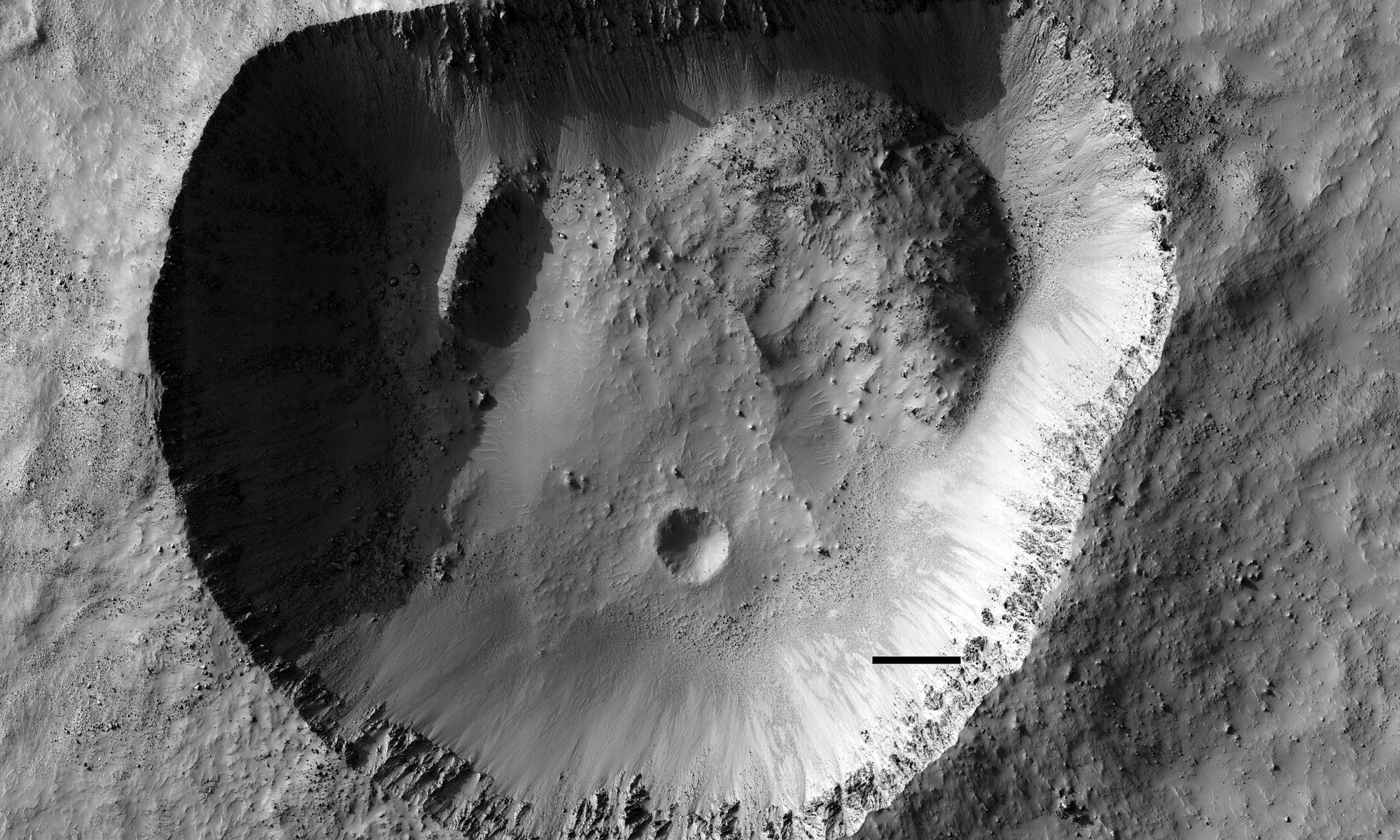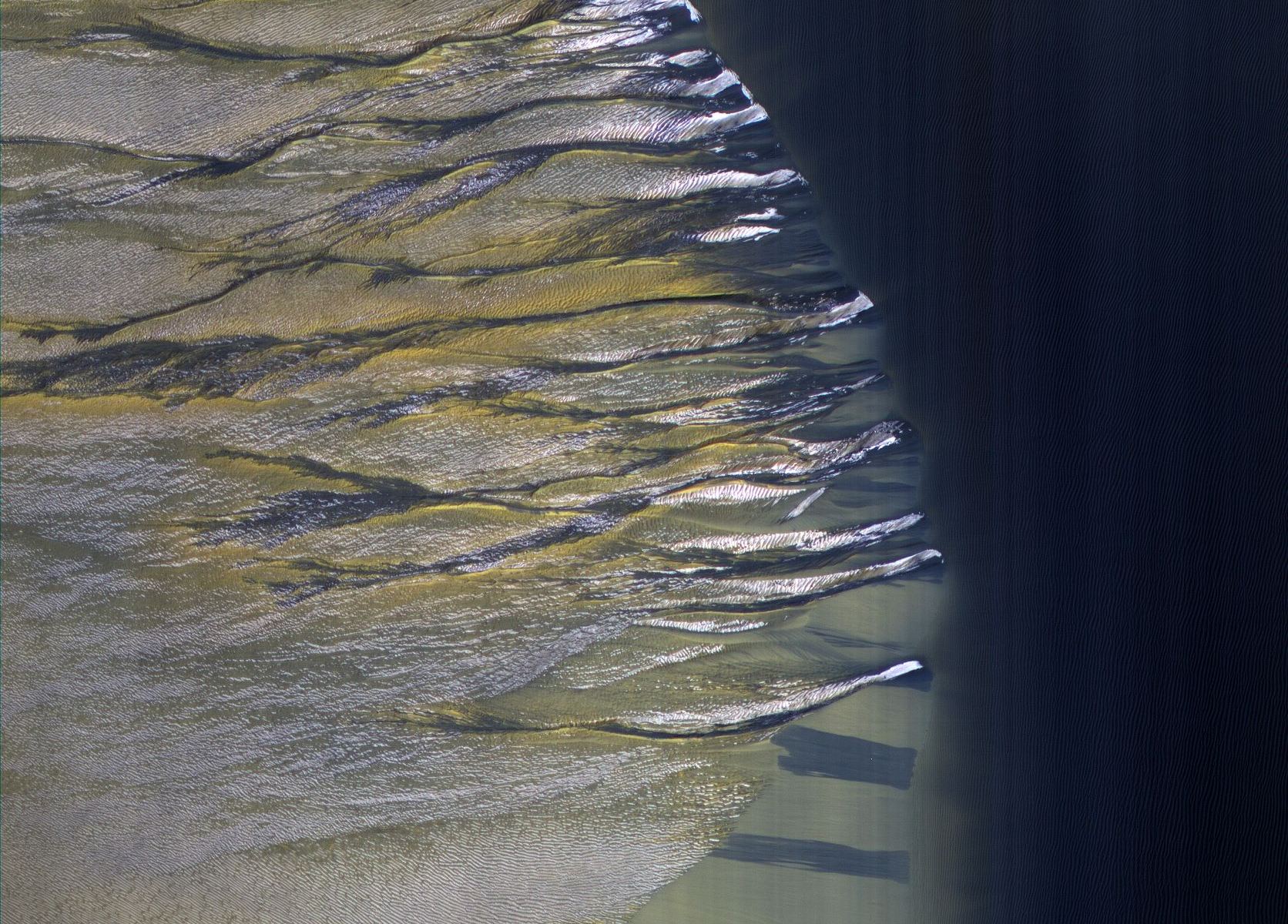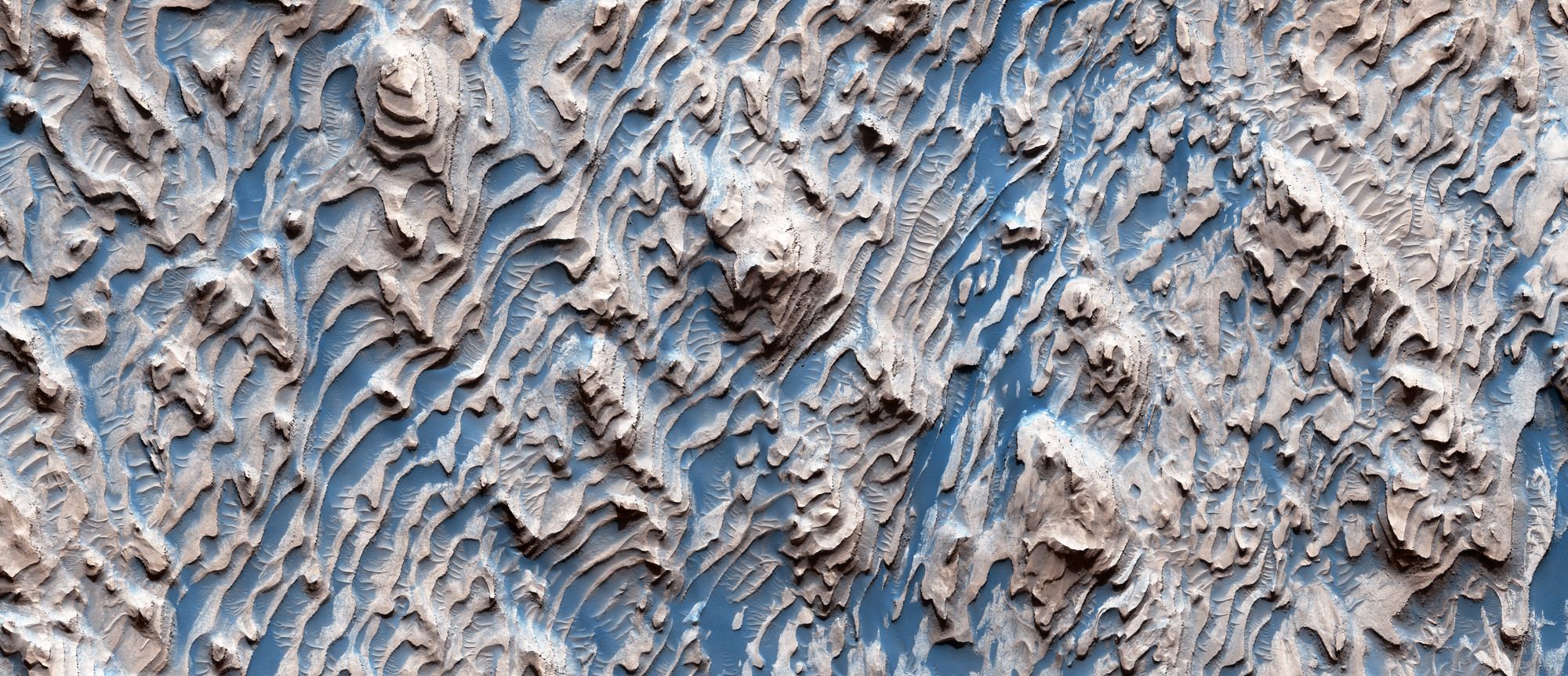Most impact craters are usually circular and fairly symmetric, but not all. This odd-shaped crater on Mars is obviously an impact crater, but it has a unique oblong shape. What happened?
Continue reading “Here’s Something Rare: a Martian Crater That isn’t a Circle. What Happened?”Perseverance Finally Spots its Own Parachute on the Surface of Mars
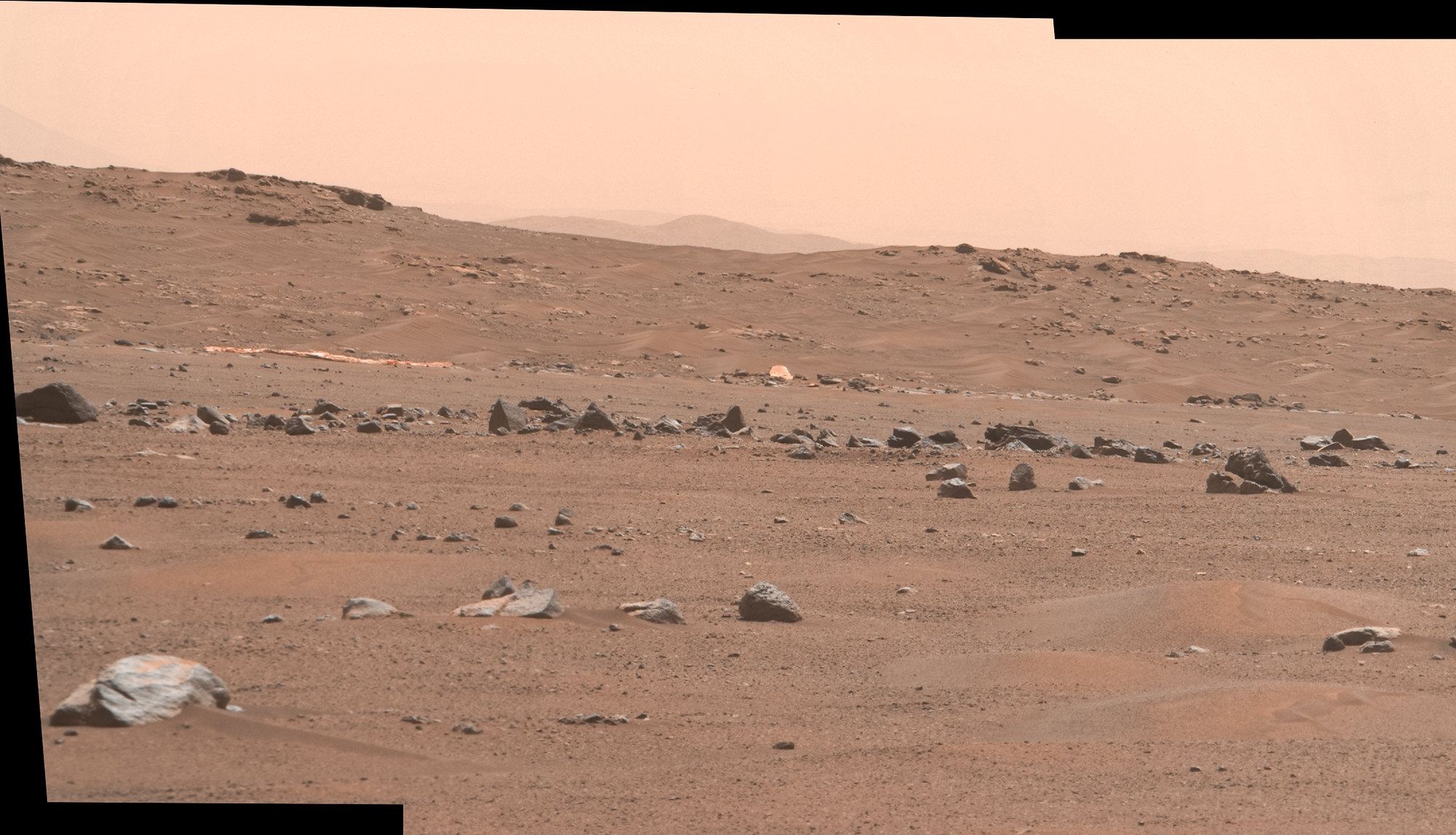
More than 13 months after the Perseverance rover landed on Mars (on February 18, 2021), the rover’s cameras have finally spotted some of the parts of the Mars 2020 landing system that got the rover safely to the ground. The parachute and backshell were imaged by Perseverance’s MastCam-Z, seen off in the distance, just south of the rover’s current location. The image was taken on Sol 404, or April 6, 2022 on Earth.
Continue reading “Perseverance Finally Spots its Own Parachute on the Surface of Mars”Mars Orbiter Captures Images of China’s Rover From Space
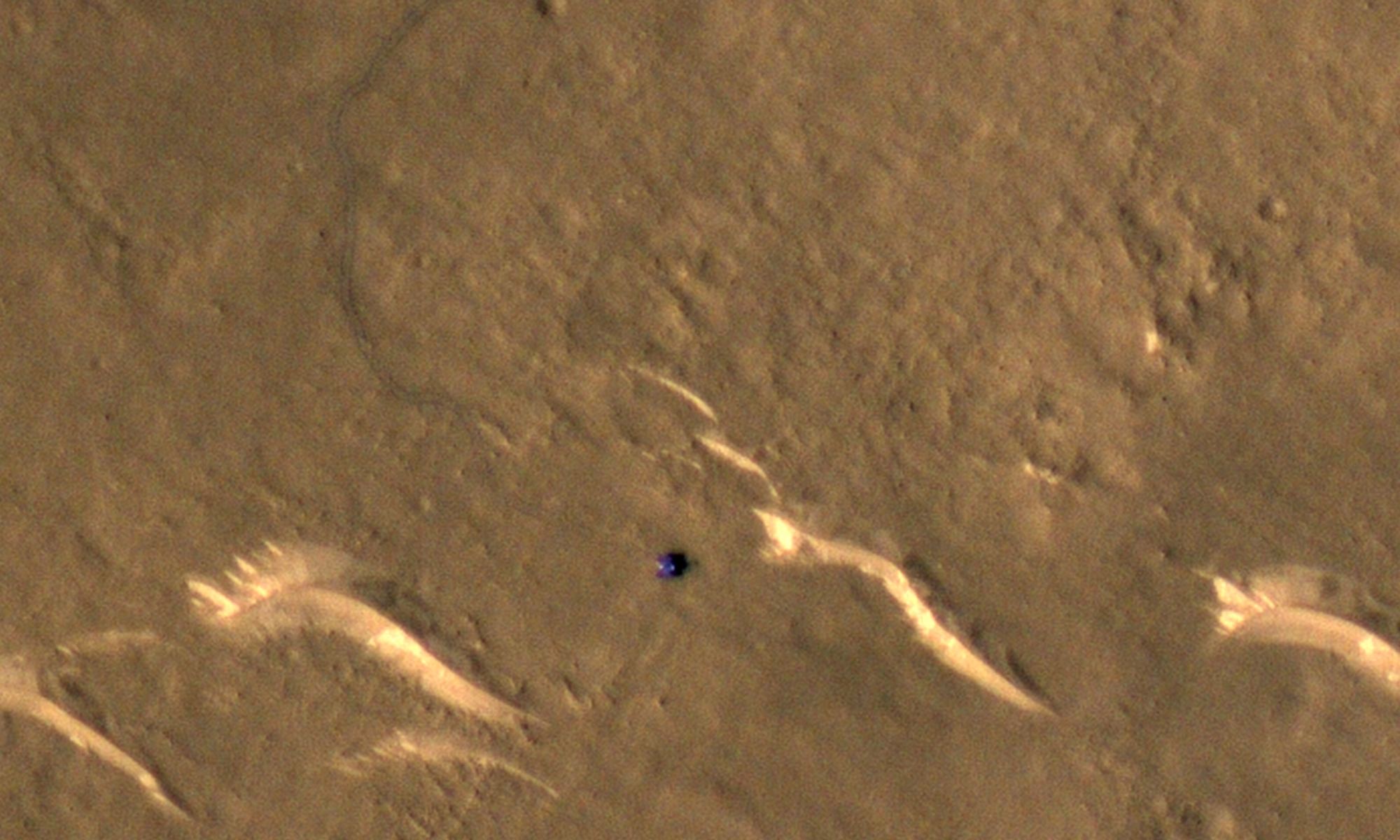
China’s Tianwen-1 lander and Zhurong rover touched down on the Martian plain Utopia Planitia on May 14, 2021 after spending about three months orbiting the Red Planet. While the Chinese Space Agency has shared images of the rover and lander (including a cute family portrait taken by a wireless remote camera), NASA’s Mars Reconnaissance Orbiter has been following the rover’s travels from above.
Continue reading “Mars Orbiter Captures Images of China’s Rover From Space”It’s Springtime on Mars, and the Dunes are Defrosting
Nothing says springtime on Mars like defrosting dunes.
Continue reading “It’s Springtime on Mars, and the Dunes are Defrosting”Strange Terraces on Mars are a Clear Signal of Sedimentary Rock
If we’ve learned anything about Mars the past 2-3 decades from the various rovers, landers and orbiters we’ve sent to the Red Planet, it’s that the planet’s geologic history is much more complicated and diverse than what we thought.
This picture from the HiRISE (High Resolution Imaging Science Experiment) camera on the Mars Reconnaissance Orbiter shows fractured sedimentary rock inside a crater called Danielson. Sedimentary rock is a sure sign that this planet was active in the past. The fracturing, layering and terrace-like structures suggests a long-term watery history in this region.
Continue reading “Strange Terraces on Mars are a Clear Signal of Sedimentary Rock”‘Glowing’ Sand Dune Erosion on the Side of a Martian Crater
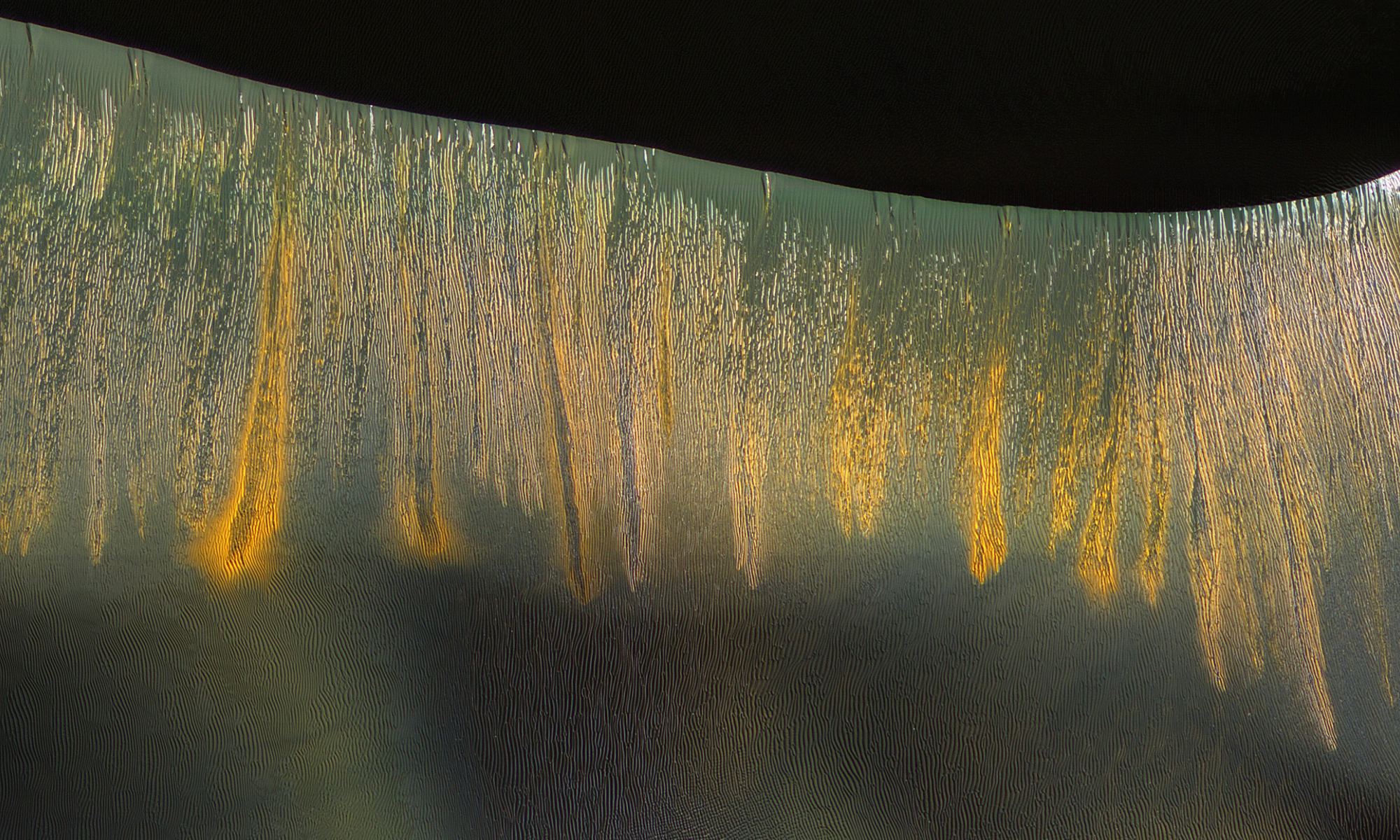
While Mars is known as the Red Planet, a variety of colors can be found on the planet’s surface. Just like on Earth, the array of colors we can see in images from Mars comes from the diverse minerals on or just under the surface.
In the case of this picture, subsurface minerals show up in gullies that have eroded down the side of a a giant sand dune.
Continue reading “‘Glowing’ Sand Dune Erosion on the Side of a Martian Crater”Here’s Perseverance, Seen From Space
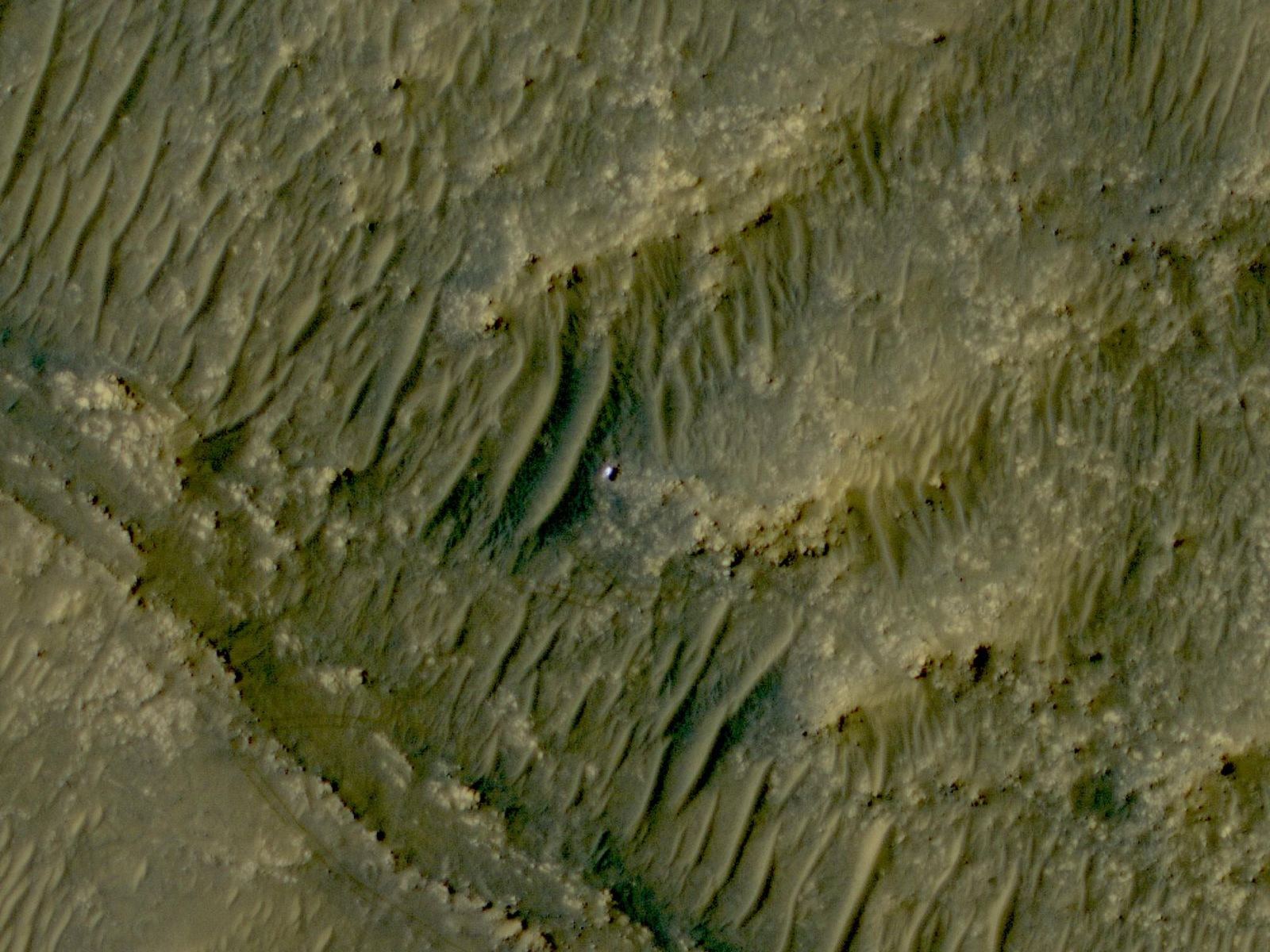
The Mars Perseverance rover is on the move! The HiRISE camera on the Mars Reconnaissance Orbiter spotted the rover from above, the first view since shortly after the rover landed in February 2021. Perseverance appears as the white speck in the center of the image above, in the the “South Séítah” area of Mars’ Jezero Crater.
The HiRISE team said the rover is about 700 meters (2,300 feet) from its original landing site.
Continue reading “Here’s Perseverance, Seen From Space”Strange Intersecting Sand Dunes on Mars
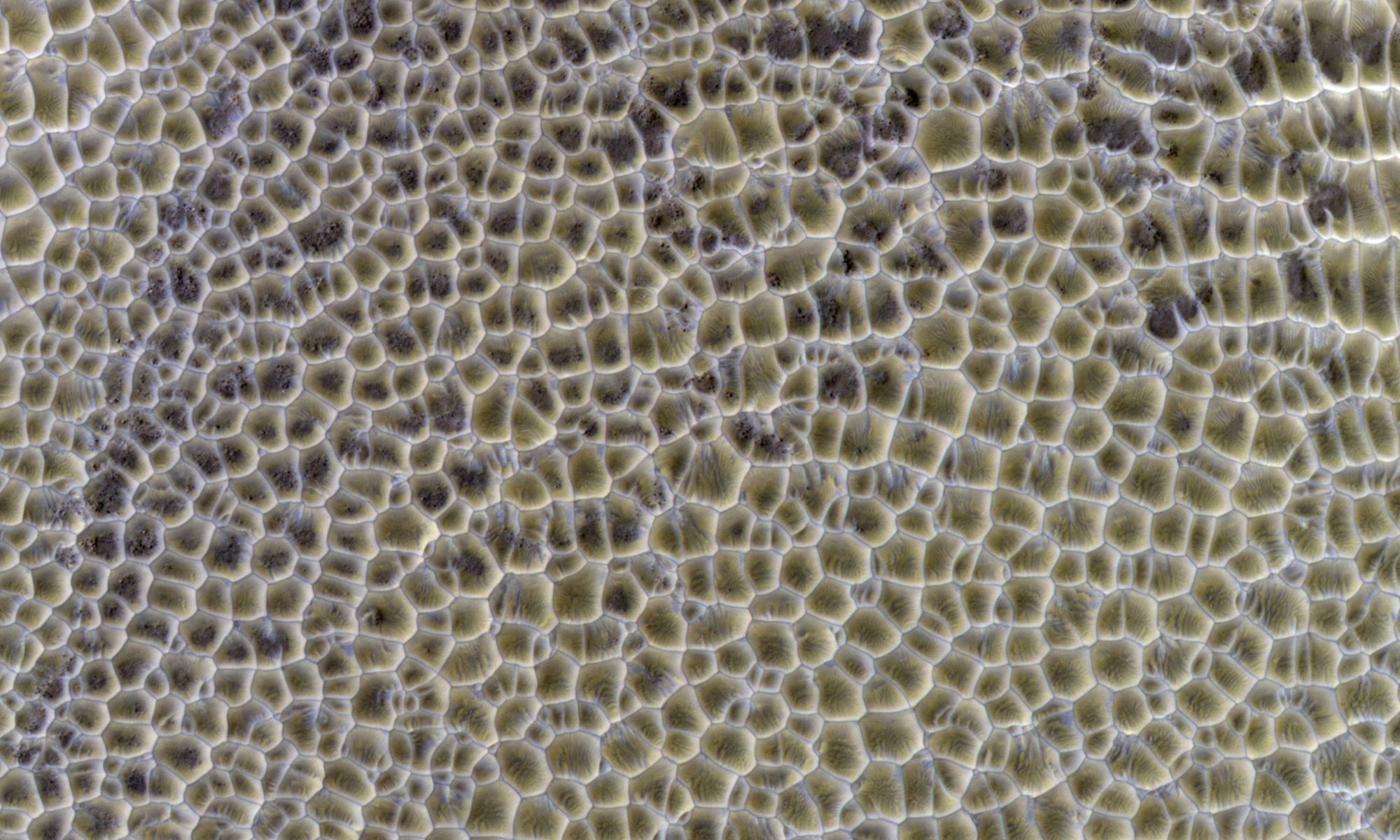
In our exploration of Mars, we’ve seen some strange but naturally occurring shapes. Polygons – a shape with at least three straight sides and angles, typically with five or more – have been seen in several different Martian landscapes, and scientists say these shapes are of great interest because they often indicate the presence of shallow ice, or that water formerly was present in these areas.
Continue reading “Strange Intersecting Sand Dunes on Mars”This is why Martian Colonists are Going to Wish They had an Atmosphere Above Them
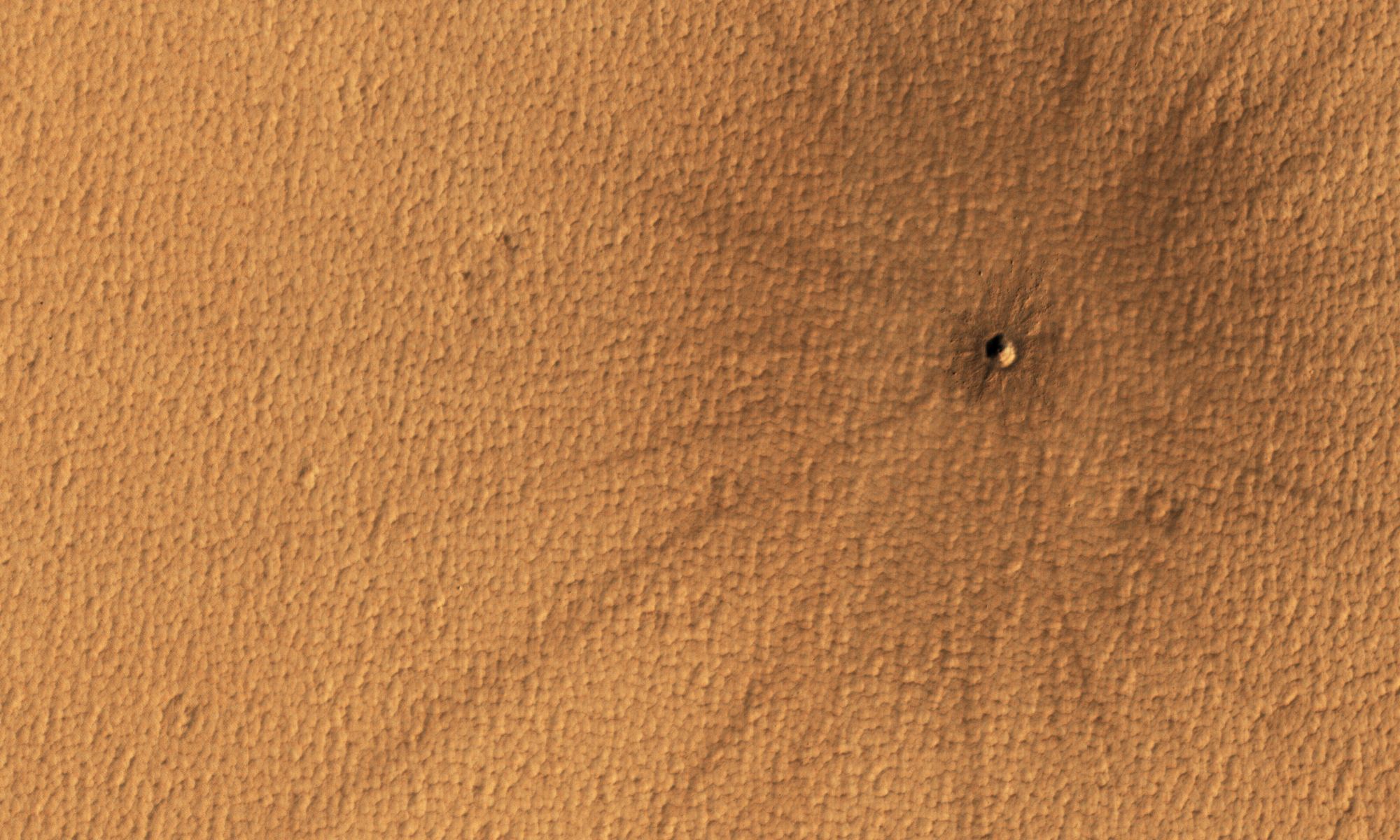
There will be all sorts of risks for any future colonists on Mars, such as extreme weather and temperatures, radiation, and the human physiological problems associated with living in with decreased gravity. But another issue means colonists on Mars will have to be on a constant lookout above their heads.
Continue reading “This is why Martian Colonists are Going to Wish They had an Atmosphere Above Them”This Is a Collapsed Pit on Mars, Not a Pimple
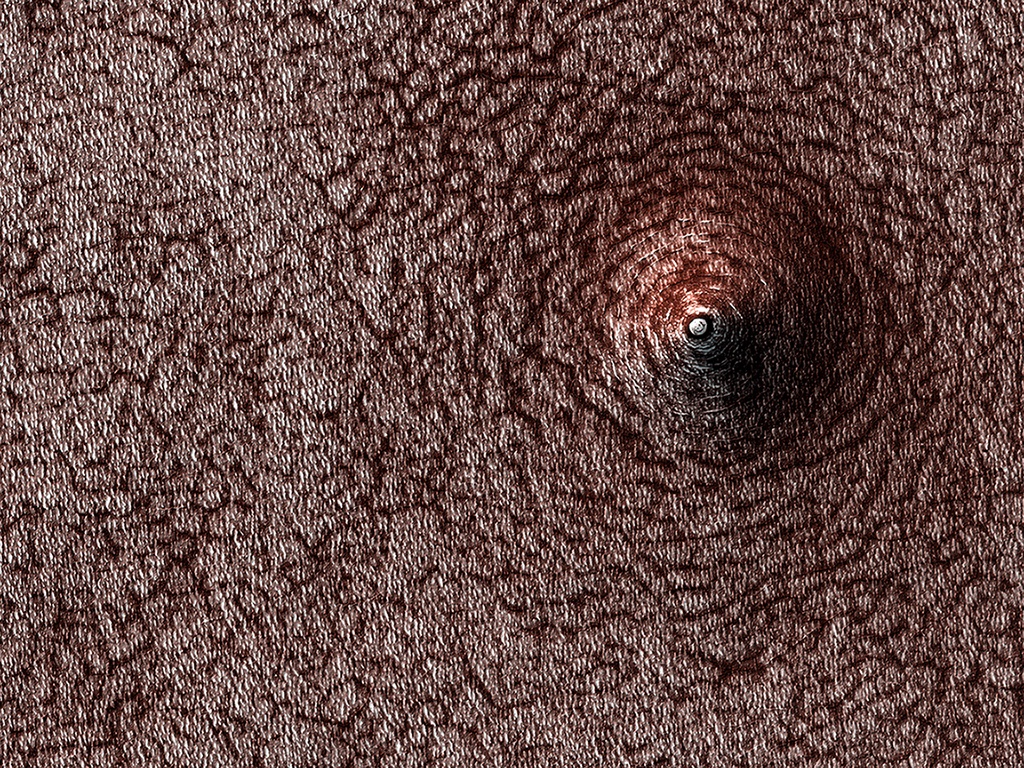
Mars has been in the news a lot lately, and for good reason. With the historic landing of the Perseverance Rover earlier in the year, and the successful flight of Ingenuity, the first-ever aircraft to fly in another atmosphere, earlier this morning (April 19, 2021), there’s no shortage of exciting stories of technical brilliance from the human-built wonders exploring the red planet. High above the plucky helicopter, the Mars Reconnaissance Orbiter (MRO) surveys the Martian landscape on a grand scale. A brain-bending image released by High Resolution Imaging Science Experiment (HiRISE), a powerful camera aboard MRO, shows a sunken pit in the planet’s polar region. From the high-altitude perspective of the orbiter, it’s easy for the mind to warp the concave depression into a convex, acne-esque Martian polar zit!
Continue reading “This Is a Collapsed Pit on Mars, Not a Pimple”
